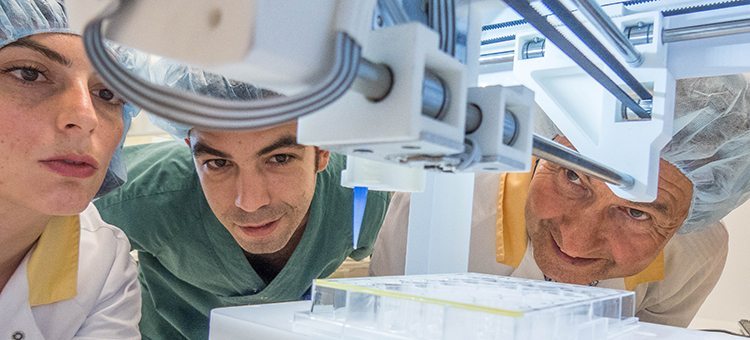Imagine being able to print human skin in 3D printers. Skin that can be used for transplants or as a model for testing new products. A project with the aim to make this happen is now starting.
SkinResQU – Centre for skin research at the University of Gothenburg and Chalmers – and the 3D Bioprinting Center is now launching this interdisciplinary project. Paul Gatenholm, a Professor of Biopolymer Technology at Chemistry and Chemical Engineering and expert on 3D bioprinting, is the man behind the ideas as well as the project manager. He applied for a grant from Vinnova’s program for Challenge-driven innovation Stage 1 – and got it.

Marica Ericson, the director of SkinResQU, is looking forward to the project.
The background of the project is our ageing population and an increasing need for test models, to perform research on treatment of skin related diseases that primarily affects the elderly. Skin cancer is increasing more than any other form of cancer, with 35,000 new cases each year. Chronic wounds resulting from diabetes affects approximately 50,000 to 80,000 patients each year, causing great suffering. In addition, the wounds cost society approximately four to five billions SEK annually.Animal skin, synthetic skin or donated human skin is today used for research aimed at treating diseases or develop new products. But these models are not sufficient. Human skin and animal skin differs greatly, and there’s a requirement to replace animal experiments with new methods. Since 2013, the use of animal testing for cosmetic purposes is also prohibited.Transplantation of skin – for example on burn victims – is often complicated, very painful and requires careful aftercare. Being able to print human tissue, based on biomaterials and human cells, would therefore be of great importance in connection also to these kinds of treatments.
SkinResQU’s role in this is to help with network and expertise in skin research. We will also act as a meeting point. A large part of our efforts initially will focus on organizing an international workshop that will take place in November, gathering the world’s leading researchers in this field, Marica Ericson says.
A kick-off with all parties will be held on June 8 at the Biotech Center. We will then form working groups, and continue by making an inventory of industrial and research needs, and identifying the international state of technology.A strong consortium will be formed, and start designing an application for Step 2. At the same time a number of undergraduate and master’s projects are running, trying to develop experimental results for how this new technology should be implemented.
We hope to contribute to a new technology that will lead to a reduced need for animal experiments to test and develop products. The project will also generate completely new knowledge on skin. The skin is a complex organ and a vital barrier to our surroundings. To print real skin, we must understand the organ better. Ultimately we hope to contribute to methods and techniques that not only reduce suffering and improve quality of life, but also save huge sums. It’s very exciting work, Marica Ericson summarizes.



